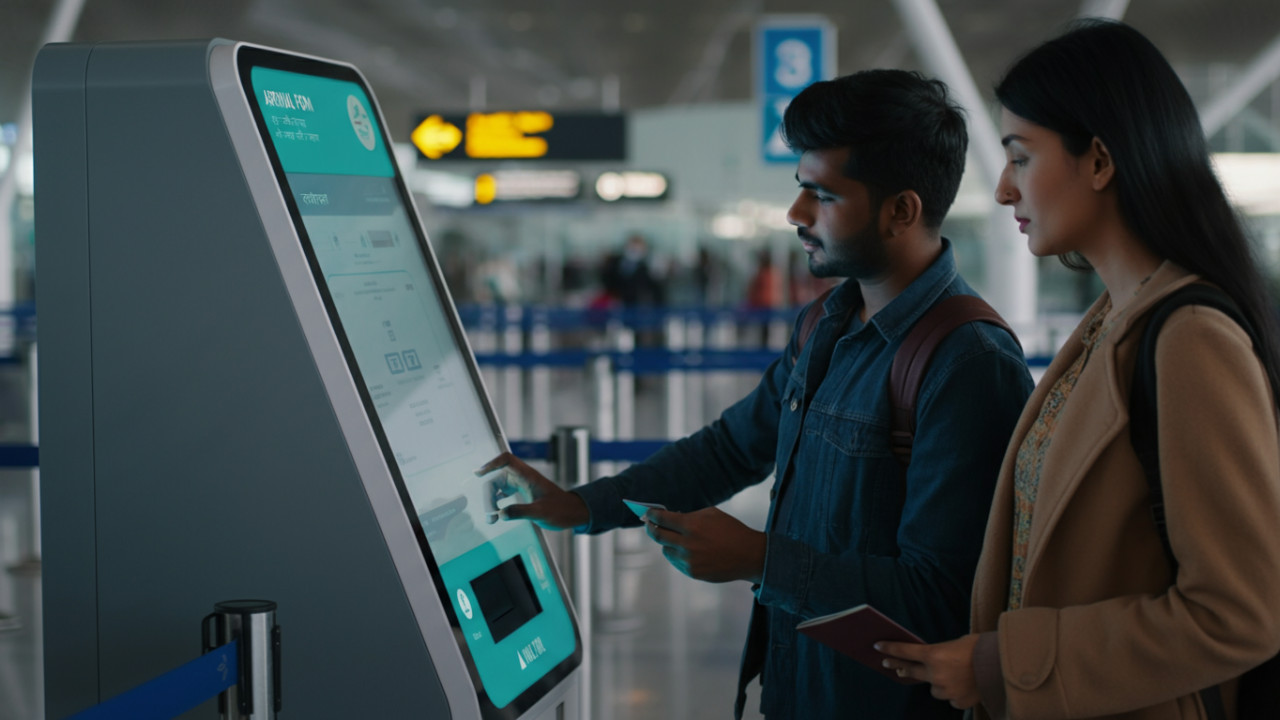India is launching a new digital e-arrival card for foreign travellers from October 1, 2025. This electronic form will replace the old paper card, making airport entry smoother and faster. Travellers can apply online up to 72 hours before their trip. The paper form will be accepted for six months.
Say Goodbye to Paper: India Embraces Digital Arrival Cards
Remember that scramble on the plane, fumbling through your bag for a pen that actually works while trying to decipher those tiny, confusing immigration forms? Well, travelers to India, rejoice! The days of the paper arrival card are fading into memory as the country rolls out its new e-Arrival Card system. It’s a move long overdue, streamlining the arrival process for foreign nationals and hopefully shortening those dreaded queues at immigration.
But how exactly does this digital transformation work, and what do you need to know before your next trip to India? Let’s break it down.
How the e-Arrival Card Works: Ditching the Paper Trail
The core idea is simple: replace the physical arrival card with a digital form that can be completed online, before you even board your flight. This means you can take your time filling it out, ensuring accuracy and avoiding last-minute panic.
The process is pretty straightforward. Travelers can access the online portal on the official government website. There, you’ll be prompted to provide information typically found on the paper card: your passport details, flight information, purpose of visit, address in India, and vaccination status.
The system allows you to upload a copy of your passport and vaccination certificate (if applicable). This pre-verification helps speed things up when you arrive at immigration. Once you’ve submitted your information, you’ll receive confirmation of your e-Arrival Card.
Who Needs an e-Arrival Card?
Currently, the e-Arrival Card is mandatory for all foreign nationals entering India. Indian citizens are exempt. This means that whether you’re visiting for tourism, business, or any other purpose, you’ll need to complete the online form before your journey. Remember to check the latest guidelines on the official website, as requirements can change.
Why the Shift to Digital? The Benefits are Clear
The move to digital arrival cards offers a multitude of advantages. For travelers, it translates to a more convenient and less stressful arrival experience. No more scrabbling for pens or deciphering indecipherable handwriting! The pre-filled information also means faster processing at immigration, potentially saving valuable time.
For the Indian government, the benefits are equally significant. Digitalization improves data accuracy and allows for better tracking of visitor arrivals. This, in turn, can enhance security measures and streamline border control processes. The reduced paperwork also contributes to a more sustainable and environmentally friendly approach to tourism. In addition, the data gathered helps with resource planning and tourism management. This all works together to create a better experience for the traveler. You can also see how India is also making strides in creating better train travel experiences.
Tips for a Smooth e-Arrival Card Experience
To ensure a hassle-free experience, here are a few tips to keep in mind:
* Start early: Complete the e-Arrival Card well in advance of your travel date to avoid any last-minute technical glitches.
* Double-check your information: Accuracy is key. Make sure all the details you enter match your passport and other travel documents.
* Have your documents ready: Keep your passport, flight details, and vaccination certificate (if required) handy while filling out the form.
* Save your confirmation: Download or take a screenshot of your e-Arrival Card confirmation for easy access upon arrival.
* Use the official website: Only access the e-Arrival Card portal through the official government website to avoid scams or fraudulent websites.
A Step Forward for Indian Tourism
The introduction of the e-Arrival Card is a welcome development that reflects India’s commitment to modernizing its tourism infrastructure. It’s a simple yet effective way to enhance the traveler experience and streamline border control procedures. By embracing digital solutions, India is paving the way for a more efficient and traveler-friendly tourism industry. This is a positive step that not only benefits visitors but also contributes to a more secure and sustainable travel ecosystem. With this digital transformation, India is poised to welcome travelers with open arms and a streamlined arrival process.








